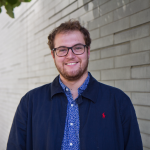Philly’s most dangerous roads clustered in black and brown neighborhoods
46 percent of Philly's most dangerous roads are in poor areas mostly populated by people of color, according to an analysis of city crash data done by the Bicycle Coalition.

Family members react at the scene of the fatal 2013 collision that took the life of Samara Banks and her three children. (JOSEPH KACZMAREK/AP)
This story originally appeared on PlanPhilly.
—
Nearly half — 46 percent— of Philadelphia’s most dangerous roads are in poor areas mostly populated by people of color, according to an analysis of city crash data done by the Bicycle Coalition of Greater Philadelphia.
These collision-prone streets cut across the entire city, but disproportionately affect a few neighborhoods in North and West Philadelphia, including Hunting Park, Kensington, and Strawberry Mansion.
The single deadliest traffic artery in the city is North Philly’s Roosevelt Boulevard, according to Philadelphia’s Office of Transportation, Infrastructure and Sustainability.
Philadelphia’s streets cross 2,575 miles, but between 2011 and 2015, 13 percent of the city’s traffic fatalities have happened on the 16-mile road running from Hunting Park to just over the city line in Bensalem. That figure represents more than 60 deaths and another 4,700 injuries on Roosevelt. Pedestrians made up one-third of those killed on the 12-lane road.
The analysis of a network of “high-injury” streets where traffic accidents are most likely to occur in Philadelphia comes in response in the city’s Vision Zero action plan.
The goal of the city initiative is to reduce Philadelphia traffic deaths to zero by 2030.
Vision Zero community facilitator De’Wayne Drummond says they are taking suggestions from residents about how to make the streets safer before drafting any plans.
“The great thing about this Vision Zero alliance is that we’re going out into the communities,” he said. “We’re not planning for the communities. We want the community to be part of this plan, not be planned for.”
Since September, the initiative has held four town hall-style meetings in areas where there were the most traffic-related deaths including in West Philadelphia and West Kensington.
At those meetings, Vision Zero officials have shared strategies pedestrians can use to cut their risk of getting hit, and also talked to residents about specific hazards in their neighborhood.
The next community meeting is scheduled for January 16th at the Cobbs Creek Library.
Kelley Yemen, director of the Office of Complete Streets, says her office works directly with the residents most affected by traffic incidents.
“One thing we’re really excited about is our neighborhood slow-zone program,” she says. “We will work with the neighborhoods hand-in-hand to develop a plan to do comprehensive traffic calming. And it will be between working with our engineers and the neighbors [ that] we determine what that looks like.”
She says Vision Zero is very sensitive to over-policing in communities of color, and says that camera enforcement on traffic lights will not increase tensions between communities of color and law enforcement.
“We wanted to make sure that we’re focusing on only asking the police department for enforcement on things that actually have a correlation to traffic incidents that include death or serious injury, rather than enforcement of all the traffic laws.”
On average, 100 people in Philadelphia die in traffic incidents every year.
During the first year of the three-year plan, traffic deaths did not decrease as much as the city had hoped. PennDOT reported just six fewer deaths this year than in 2017. Progress on meeting goals for completing protected bike lanes and making other improvements has also not moved as quickly as advocates hoped.
Earlier this year, the Pa. Senate took one step years in the making when they passed a bill to put speed cameras on traffic lights along Roosevelt Boulevard. The cameras are one piece of a larger strategy, officials have said.
WHYY is your source for fact-based, in-depth journalism and information. As a nonprofit organization, we rely on financial support from readers like you. Please give today.







